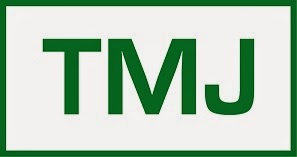Wealth is health. Humans are not all equal across globe, so why is that? Why is there a segment of 1% across many populations around the globe? Is there a reason why the first world economies dominate third world economies? Is race, culture, technology, geography or any reason the key to the reason why? It is not easy to figure out, but can be done. The author succeeds.
Why do people in the first world have more wealth than the rest of the world? Many races and societies have created great wealth over time, but then failed, is there any common pattern of success? This question was first asked by the author's helpers in New Guinea more than 30 years ago. It is very interesting to understand. He takes you on a historical journey. He explains a number of natural advantages that come down to geographic luck.
The author's basic idea is that in Europe & Asia, especially near Mesopotamia, the fertile crescent, the best animals get domesticated. They no longer need to be hunted. Milk from these animals brings regular protein in rich diets. The people who live with animals get stronger in health and resist disease. Goats, sheep, pigs and cattle all help economic power. Animal power drives machines for improved production of food. Extra food can then be traded for storing extra wealth. Soon human health rises against disease and germs, it is the first economic advantage gained.
By spreading East and West along the same latitude in Europe and Asia, the extra food turned into wealth, could then be invested for artists, specialists and soldiers. The military benefit from germs was an extra weapon. This is best explained by smallpox when the Spanish first landed in North or South America. Over 95% of the native Indian populations died of small pox, those who survived then faced follow up diseases. Without this ability to work crops, the extra wealth created could not be stored. Once in place, then fire first used for clay pots, would lead to bronze and later steel weapons.
Many have been critical of the theory as too simple, and does not value enough cultural influences. Many cannot accept that the land itself, the geography, determine local culture at its base. Farming allows storage for surplus wealth. Extra income from this surplus is then invested in technology, leading to better guns or steel. This all makes wealth easier to protect & transport via rail, and increase even more wealth.
The Top 3 Takeaways from this book that impact any reader are:
1) There is a lot to learn about how to be economically successful in society. You have to learn about key market factors, and adapt to them constantly. Germs attack the weak more than the strong.
2) The best economies know how to make money and keep doing what they do best where they have an edge, usually technology. You need to maximize the power of military guns or similar technology over all enemies.
3) Becoming a successful economy, for a true long-term length of success is never fast or easy. Short cuts catch up with you, and can lead to losses. The more you invest in higher levels of technology or other benefits to your society, the better you will triumphs over competitors. The steel industry is a good example, as few can enter it due to high capital entry costs.
The book is full of many details that cannot be covered in this review, but the theory itself is really eye opening in many ways. The land makes the people survive, not the other way around. As a Pulitzer prize winning project of 30 years, it has certainly made one man's career shine. I highly recommend this book to anyone who likes to seek out answers in history that explain why economic wealth & power spread on a global scale.
Please visit us for our Friday Feature Review where TMJ Partners will review books, movies, conferences and anything else with a financial theme. Follow us now for our free weekly updates, just click here. Thank you for reading and learning more about how money is made in finance!
For more Buy-Side and Sell-Side roles in Asia-Pacific, contact our TMJ Partners Japan & Asia Finance team.
Tokyo Tokyo






